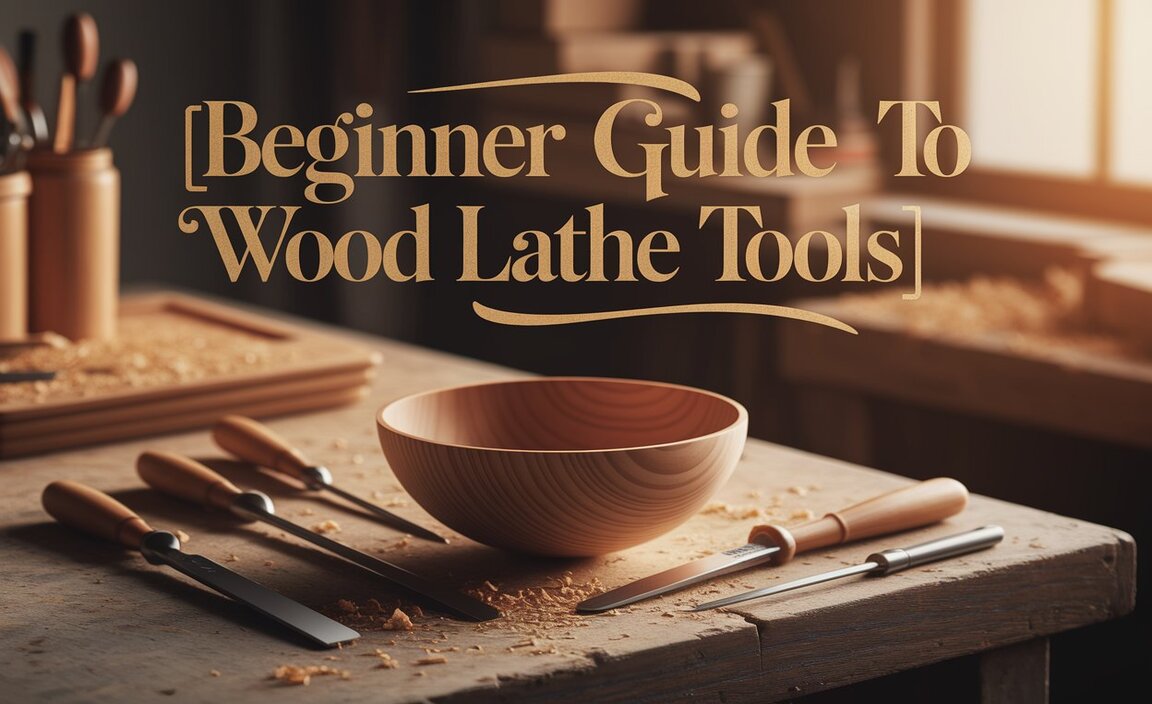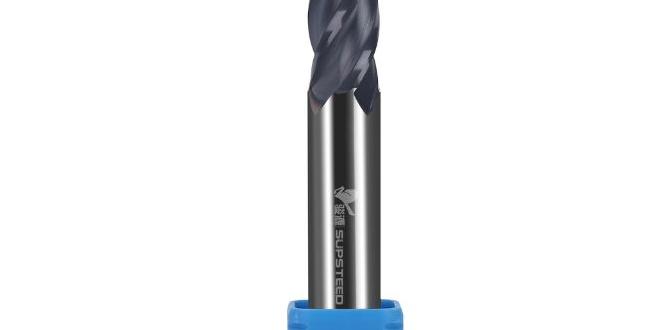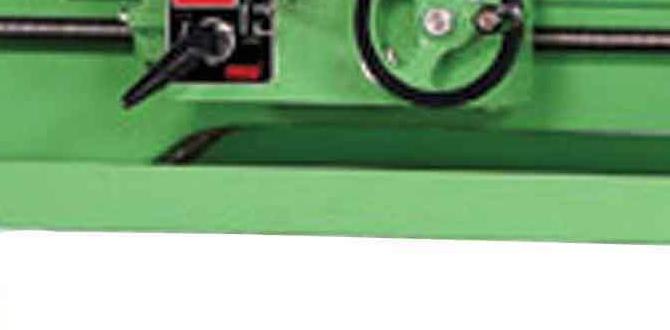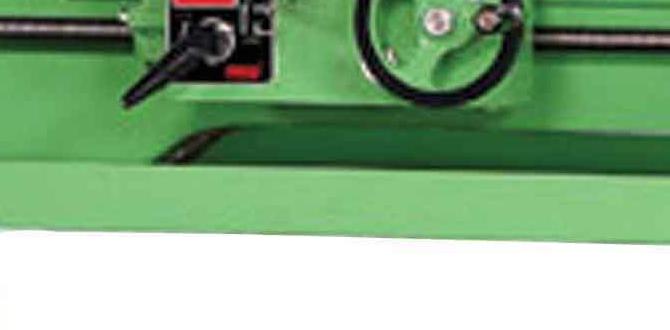Quick Summary: A 4-jaw chuck for your mini lathe is a game-changer. It securely grips irregular shapes, offers independent jaw control for perfect centering, and is essential for advanced projects. Learn the basics of choosing, mounting, and using one effectively to expand your machining capabilities safely and confidently.
Hey there, fellow makers! Daniel Bates from Lathe Hub here. Ever looked at a funky-shaped piece of material on your mini lathe and thought, “How on earth do I hold onto that securely?” Or maybe you’ve struggled with getting those perfectly concentric circles you need for intricate work. If so, you’re not alone! Holding your workpiece perfectly steady and centered is crucial for good results on any lathe, especially a mini one. That’s where a 4-jaw chuck comes in. It’s a versatile tool that can unlock amazing possibilities for your projects. Don’t worry if it seems a bit complex at first; I’m going to guide you through everything you need to know, step-by-step. Let’s get your mini lathe ready for some serious work!
What is a 4-Jaw Chuck and Why Do You Need One for Your Mini Lathe?
Think of a lathe chuck as the “hand” that holds your workpiece. Most mini lathes come with a 3-jaw chuck, which is great for round or hexagonal stock because all the jaws move together to center the piece automatically. It’s quick and easy for common tasks.
A 4-jaw chuck, however, is different and offers more flexibility. Each of the four jaws can move independently of the others. This might sound like more work, but it gives you incredible control, especially when working with irregularly shaped materials or when you need to achieve precise alignment.
Key Benefits of a 4-Jaw Chuck:
- Grips Irregular Shapes: This is the big one! Need to machine a square block, an odd casting, or something with a wonky profile? A 4-jaw chuck can grab it firmly because you can position each jaw independently.
- Independent Jaw Control: Each jaw has its own scroll and is operated by a separate key. This means you can adjust each jaw precisely, which is essential for centering non-round objects perfectly or for holding very awkward shapes.
- Achieve Perfect Centering: While a 3-jaw chuck centers automatically, a 4-jaw chuck lets you manually “dial in” the exact center of your workpiece, even if it’s not perfectly round, using a process called “tramming.”
- Secure Grip on Large or Odd Workpieces: For larger diameter or unusually shaped workpieces that a 3-jaw might struggle to grip securely, a 4-jaw chuck offers a more robust and reliable hold.
- Versatility for Advanced Projects: From custom fixtures to decorative pieces with complex geometries, the ability to hold and machine challenging shapes opens up a whole new world of project possibilities.
So, while a 3-jaw chuck is your trusty workhorse for standard tasks, a 4-jaw chuck is your specialized tool for when things get a bit more unusual. It’s an investment that dramatically expands what you can achieve on your mini lathe.
Choosing the Right 4-Jaw Chuck for Your Mini Lathe
Selecting a 4-jaw chuck isn’t just about picking the cheapest one. You need to ensure it’s compatible with your lathe and suitable for the types of work you plan to do. Here’s what to consider:
Key Factors to Consider:
- Size and Diameter: Chucks are measured by their diameter. For mini lathes, you’ll typically see sizes ranging from 3 inches to 6 inches. The chuck should be proportional to your lathe’s swing (the maximum diameter of workpiece it can handle). A common size for many mini lathes is a 3-inch or 4-inch chuck.
- Back Mount Type: This is crucial for compatibility. Your mini lathe’s spindle needs to accept a specific type of backplate or adapter for the chuck to mount onto. Common back mount types include:
- Threaded Mount: Where the chuck screws directly onto the lathe spindle threads (e.g., 1-inch x 8 TPI or 3/4-inch x 10 TPI).
- Quick Change/Set Screw Mount: These often use a thread plus set screws for a more secure fit, or proprietary systems.
- Cam Lock (D1-type): Less common on very small mini lathes, but some larger ones might use this system.
Always check your lathe’s manual for its spindle thread size and type. If it’s not a direct thread mount, you’ll likely need a specific backplate that threads onto your spindle and then bolts to the back of the chuck (often referred to as a “threaded back mount” chuck). Reputable manufacturers will specify the back mount size.
- Reversible Jaws: Most quality 4-jaw chucks come with reversible jaws. This means you can flip the jaws around to grip larger diameter workpieces on the outside.
- Jaw Type: Standard jaws are usually sufficient for most beginner to intermediate users. Some chucks offer specialized jaws (e.g., soft jaws for custom gripping, long reach jaws), but you can usually add these later if needed. For a first chuck, standard jaws are fine.
- Brand and Quality: While budget is a consideration, investing in a reputable brand like Bison, Vertex, or even good quality import brands will generally mean better precision, smoother operation, and longer life. Cheap chucks can be frustratingly inaccurate.
- Included Accessories: Does it come with the necessary chuck key(s)? Maybe a spare set of screws? Check what’s in the box.
When in doubt, consult your lathe manufacturer’s recommendations or websites that specialize in lathe accessories. Machinery Lubricants has some great articles on understanding chucks, which can be helpful for a deeper dive into their mechanics.
Common 4-Jaw Chuck Sizes for Mini Lathes:
Here’s a quick look at typical chuck sizes you might encounter:
| Chuck Diameter | Typical Use Case on Mini Lathes | Considerations |
|---|---|---|
| 3 Inches (approx. 75 mm) | Smaller mini lathes, hobbyist use, delicate work. | Lighter duty, may have smaller jaw travel. |
| 4 Inches (approx. 100 mm) | Most common for general-purpose mini lathes, good balance of size and capacity. | Offers a good range of gripping diameters. |
| 5-6 Inches (approx. 127-152 mm) | Larger mini lathes or where significant workpiece capacity is needed. | Can be quite large for smaller mini lathes and may require a more robust spindle. |
Remember to match the chuck’s back mount to your lathe’s spindle. This is the single most important step for compatibility.
Mounting Your 4-Jaw Chuck Safely and Correctly
Mounting a chuck is a task where precision and safety are paramount. A loose chuck is incredibly dangerous. Follow these steps carefully.
Tools You Will Need:
- Your new 4-jaw chuck with appropriate backplate (if needed).
- Correct size chuck key(s) for your chuck and backplate bolts.
- A soft-faced mallet or block of wood.
- Clean rags.
- Thread lubricant (anti-seize compound is often suitable).
- Safety glasses! (Always!)
- Gloves (optional, but can help with grip).
Mounting Steps:
- Prepare Your Lathe: Ensure the lathe is powered off and the spindle is locked or stationary. If your lathe has a spindle lock, engage it.
- Clean Mates: Thoroughly clean the lathe spindle threads and the mating surface on the backplate (if using one) or the back of the chuck. Remove any old grease, dirt, or debris. A clean connection is essential for a secure fit and accurate operation.
- Apply Lubricant: Apply a small amount of appropriate thread lubricant to the spindle threads and/or the backplate threads. This helps prevent galling and ensures the chuck tightens properly.
- Attach the Backplate (if applicable): If your chuck uses a separate backplate, thread it onto your lathe’s spindle. Tighten it securely, often with a wrench on the flats provided or by “bumping” it tight with a soft mallet against a lug while the spindle is held still. Ensure it’s snug.
- Mount the Chuck:
- For Screw-on Chucks: Carefully align the chuck’s threads with the spindle (or backplate) and begin to screw it on by hand. Work it on until it’s snug.
- For Bolt-on Chucks (with Backplate): Align the bolt holes on the chuck with the holes on the backplate. Insert the bolts and tighten them firmly.
- Tighten the Chuck: This is the critical step. Using the chuck key(s), tighten the jaws evenly. For a screw-on chuck, you’ll typically tighten it until it’s fully seated against the backplate or spindle shoulder. For bolt-on designs, tighten the bolts in a star pattern to draw the chuck up evenly.
Crucial Safety Tip: For screw-on chucks without a distinct stop, you often tighten them until they are snug, then give them a final “persuasive” tap with a soft mallet on the chuck body (not the jaws!) while holding the key firmly to ensure they are fully seated against the spindle taper/shoulder. Some machinists prefer to tighten them until snug, then slightly loosen and retighten. An improperly seated chuck can fly off at speed!
- Check for Security: Gently try to rotate the chuck by hand. It should feel solid and not wobble. If it feels loose, repeat the tightening process.
- Install Jaws (if removed): If your chuck jaws were removed for mounting, re-install them according to the manufacturer’s instructions, ensuring they are installed in the correct orientation (usually with the part number facing outwards for standard gripping).
- Test Run (LOW SPEED!): Before you start actual machining, run the lathe at its lowest speed. Listen for any unusual noises and watch for any wobble. If anything seems off, stop the lathe immediately and re-check the mounting.
Important Note on Jaw Orientation: Always refer to your chuck’s manual. Most 4-jaw chucks have jaws with a “number” or “part” etched on them. For standard gripping, these numbers typically face outwards. For reverse gripping (using them on the outside of a workpiece), you flip the jaws over, and the numbers will face inwards. Using them incorrectly can lead to poor grip or no grip at all.
Using Your 4-Jaw Chuck for Centering and Gripping
The real magic of a 4-jaw chuck lies in its independent jaw control. This allows you to grip a variety of workpieces, most importantly, to achieve accurate centering.
Gripping Different Shaped Workpieces:
One of the primary reasons to use a 4-jaw chuck is to grip non-round stock. Here’s how it works:
- Starting Point: Loosen all four jaws until they are roughly equidistant from the chuck’s center. This creates a stable starting position.
- Placing the Workpiece: Position your workpiece (e.g., a square block) between the jaws.
- Progressive Tightening:
- Gently snug up Jaw 1 against the workpiece.
- Then, move to Jaw 3 (opposite Jaw 1) and snug it up against the workpiece.
- Next, snug up Jaw 2.
- Finally, snug up Jaw 4 (opposite Jaw 2).
This “opposed opposed” tightening prevents the workpiece from shifting or becoming cocked as you apply pressure.
- Incremental Tightening: Once all jaws are snug, you’ll tighten them progressively. Insert the chuck key into Jaw 1, turn it a half-turn or a full turn. Then, move to Jaw 3 and turn it the same amount. Repeat for Jaw 2, and then Jaw 4. Continue this process, moving around the chuck in sequence, tightening each jaw incrementally. This ensures even pressure is applied and the workpiece remains centered as it’s drawn in.
- Checking for Security: After several rounds of tightening, give the workpiece a gentle tug to ensure it feels very secure.
Centering with a 4-Jaw Chuck: Tramming
This is where the 4-jaw chuck shines. Even if your workpiece isn’t perfectly centered initially, or if it has an irregular shape, you can precisely center it. This process is often called “tramming” the workpiece (or tramming the chuck itself, but we’ll focus on centering the workpiece here).
What You’ll Need for Tramming:
- A Dial Indicator (preferred) or a Dial Test Indicator.
- A suitable magnetic base or holder for the dial indicator.
- Your chuck key(s).
- Your workpiece securely, but not fully, clamped in the chuck.
Tramming Steps to Achieve Perfect Center:
- Mount the Dial Indicator: Attach the magnetic base to the lathe bed or tool post, and position the dial indicator so its probe can sweep across the face or the diameter of your workpiece as the lathe turns.
- Initial Sweep (Rough Center): Spin the lathe at a slow speed. Position the indicator’s probe to touch the face of your workpiece. Note the maximum reading on the dial indicator. Then, move the indicator to sweep across the side or diameter of the workpiece. This gives you an idea of how “out of true” it is.
- Adjust Jaws:
- Identify the jaw that is holding the part furthest out.
- Slightly loosen that jaw.
- Slightly tighten the opposite jaw (the one holding the part furthest in).
This is a trial-and-error process. Small adjustments make a big difference.
- Repeat and Refine: Spin the lathe again and take new readings with the dial indicator on the face and sides. You’re looking to get the indicator reading as close to zero as possible across the entire surface you’re measuring. When tramming a square block, you typically want the face of the block to be parallel to the spindle axis (minimal runout on the diameter sweep), and the outer edges of the face to be as close to the spindle centerline as possible (indicated by the sweep on the face). For precision, you aim for very low runout, often just a few thousandths of an inch.
- Final Tightening: Once you’re satisfied with the centering (the dial indicator shows minimal runout), securely tighten all four jaws progressively, as described in the “Gripping Different Shaped Workpieces” section, being careful not to disturb the centering. Double-check the indicator readings after final tightening.
It takes practice, but once you master tramming, you can achieve incredible accuracy with your 4-jaw chuck. For more in-depth guides on using dial indicators, resources like this explanation from the National Park Service can offer further context on precision measurement tools.
Basic Gripping vs. Reverse Gripping:
<





